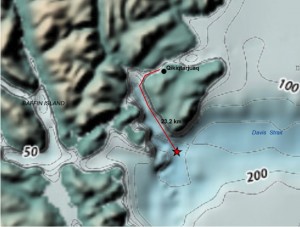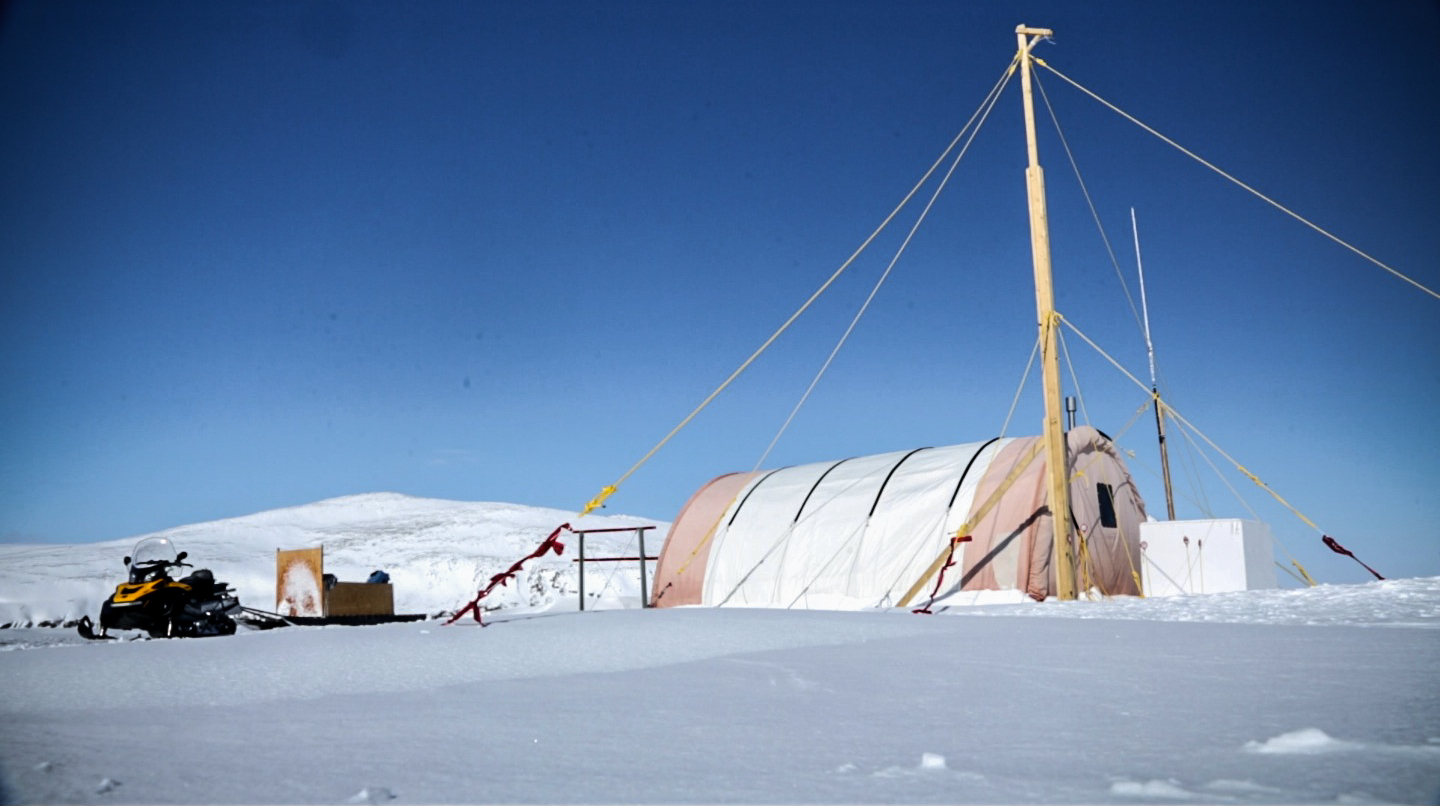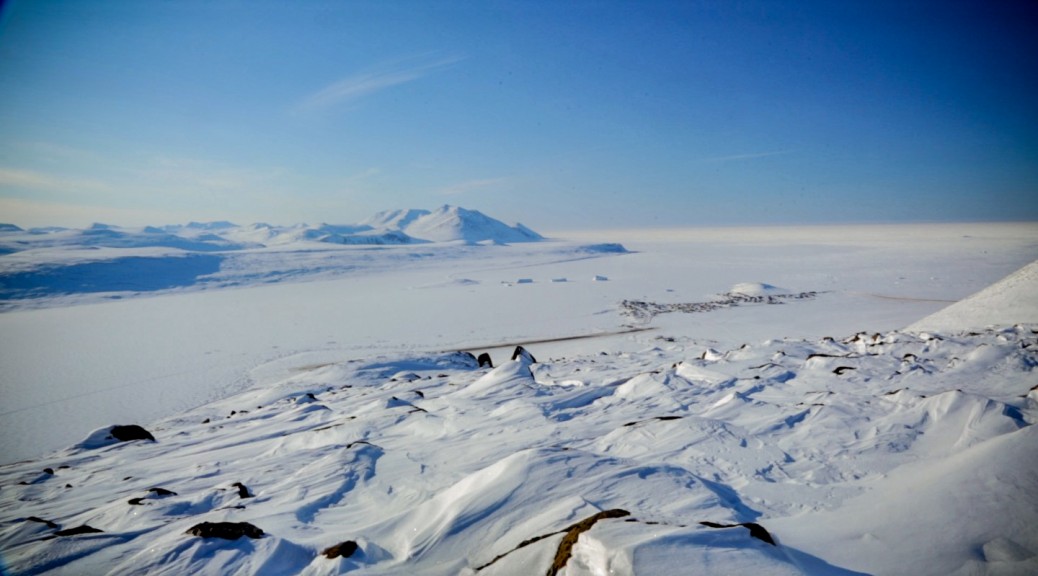The 2016 campaign will last 3 months from mid‐April to mid‐July, capturing all phases (initiation, maintenance, decline) of the PSB. The ice camp is located south of Broughton Island, near the community of Qikiqtarjuaq on land‐fast ice in a location where water depth exceeds 350 m.

This location provides easy and safe access to ocean conditions, from an Inuit village where housing and lab space can be found.

Following the delivery of the scientific research license from the Nunavut Research Institute, we successfully conducted preliminary experiments at the same location in 2015, developing good relationships with the community of Qikiqtarjuaq.
Scientific research in 2016
The overarching objective of the study at the ice camp remains to investigate the impact of the melt progression and the resulting changes in snow and sea ice properties on the phenology of phytoplankton.
One innovation is to use novel optical experimental methods and models to measure and model light fluxes through the snow and sea ice. This is intended to better understand ice algae growth and the onset of the PSB.
Based on the 2015 preliminary results, we propose to deploy, for a second year, new optical and acoustical real-time sensors to improve the resolution at which physical and biogeochemical processes operating within the ice-ocean interface and boundary layer are monitored. This fine resolution will improve our understanding of the spatial and temporal variability of PSB. In addition, laboratory analysis on seawater and sea-ice samples will improve the detailed description of the PSB event.
Sea ice growth and melt have well-known global climatological and biogeochemical significance, but a detailed process understanding is lacking. The mismatch between the very rapid observed changes in the Arctic ice cover relative to climate model predictions is a direct result of this lack in understanding. Small-scale processes cannot be resolved by coarse resolution models, and need to be understood before they can be parameterized.
Science operations
Similar to 2015, sampling will involve installing automated electronic sensors on the ice that monitor weather, currents and ocean properties. Regular ice and water sampling involves the use of ice corers, augers, and water samplers.
Science operations on the ice will be centralized in a heated Polarheaven tent, plus one or 2 huts rented from local residents. Just as in 2015 operations, the scientists will live in Qikiqtarjuaq and conduct laboratory work in the Inuksuit School.
Researchers will travel by snowmobile to a fixed sampling site every 2‐3 days to collect data from sensors and bring water and ice samples back to the village for analysis. We will follow the same 30 km route to the camp on each trip and avoid all hunting and fishing areas identified by the local Hunters and Trappers Organization. After ice breakup, we will travel by airboat.


